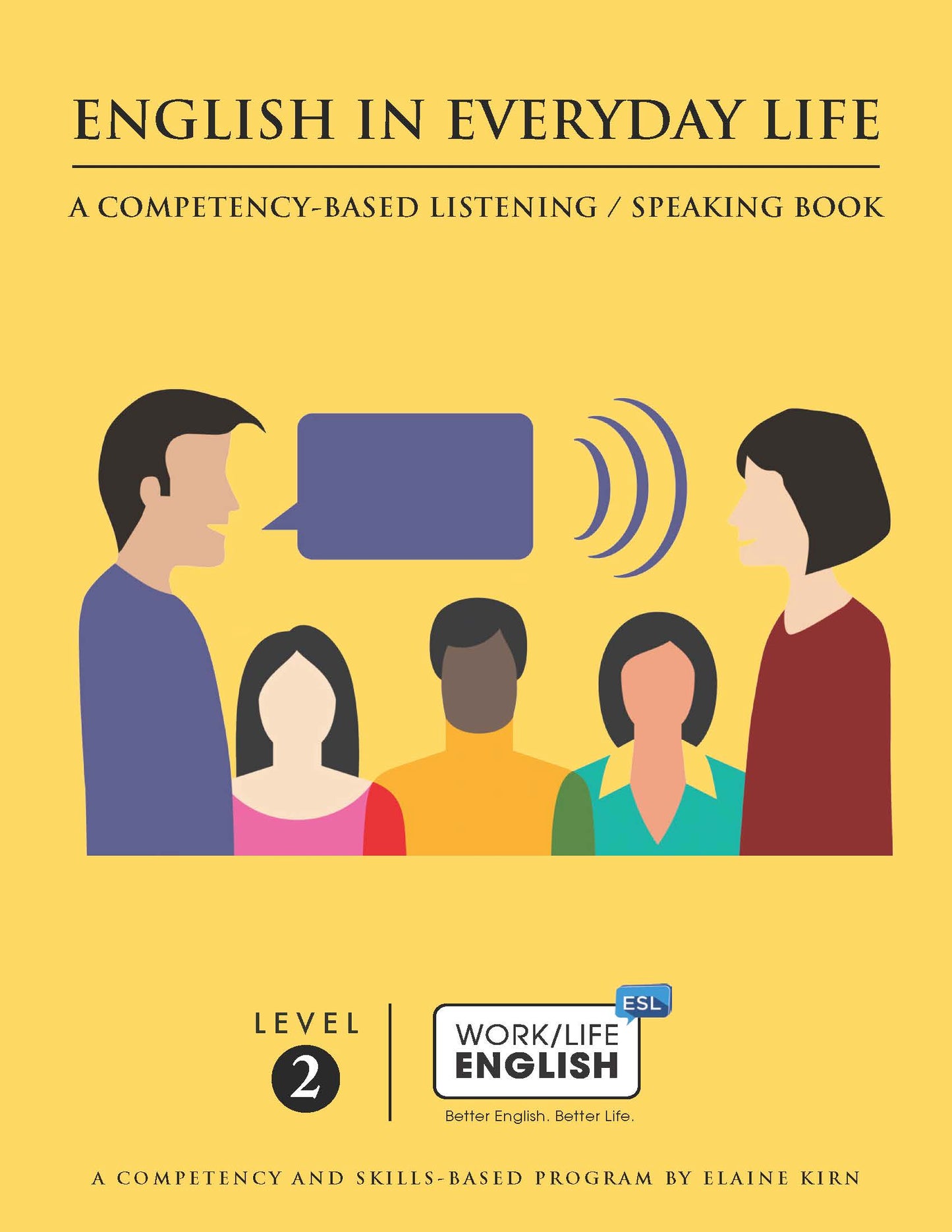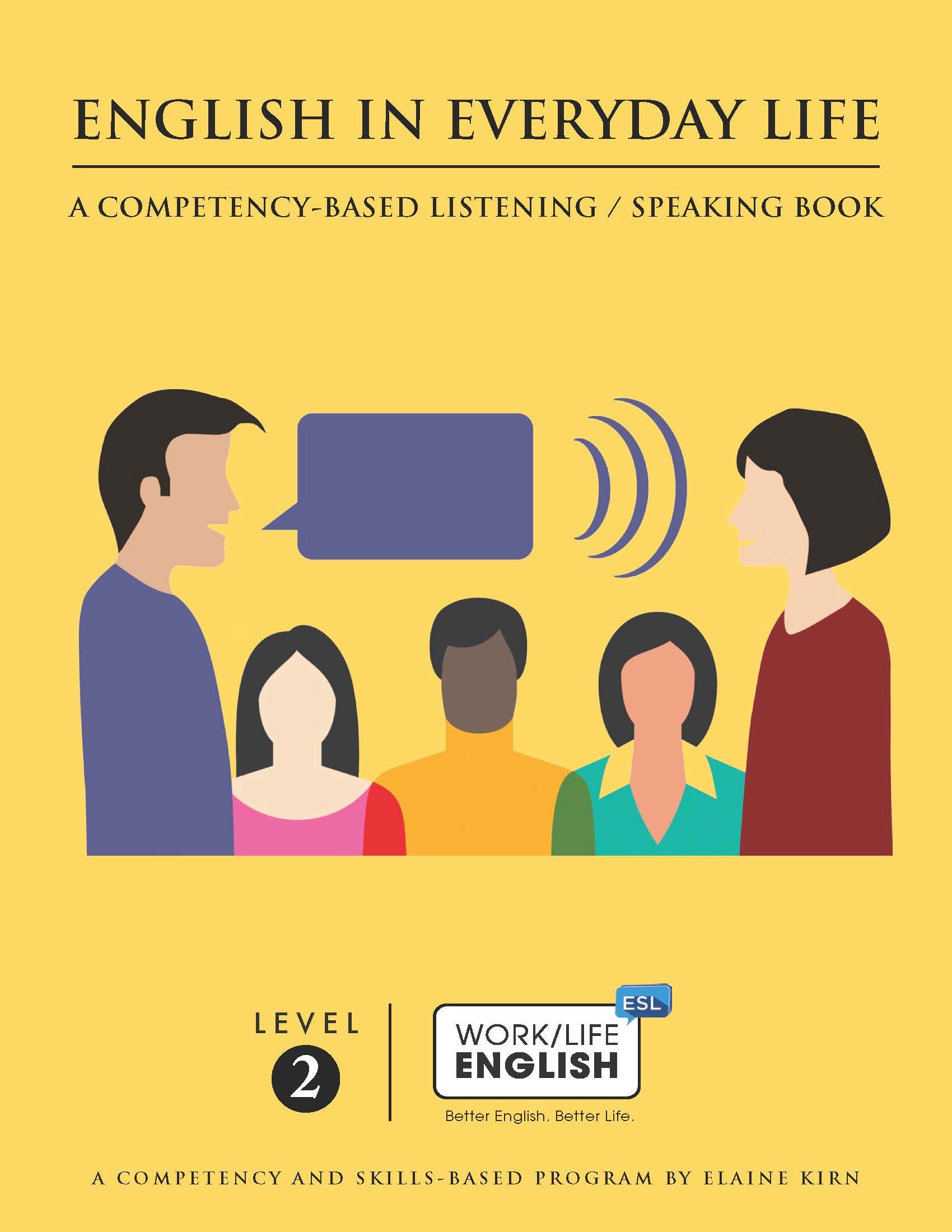Work/Life English
E-02a Work/Life English Level 2 Listening/ Speaking - English in Everyday Life
E-02a Work/Life English Level 2 Listening/ Speaking - English in Everyday Life
Description:
This is a comprehensive resource focusing on "English in Everyday Life." It is designed to enhance your listening and speaking skills through practical activities and engaging exercises. With ten engaging chapters, each centering on real-life themes, this book offers an immersive learning experience that enhances your ability to listen and speak confidently in various situations.
Key Components:
- Interactive Activities.
- Vocabulary Enrichment.
- Listening Practice.
- Pronunciation Mastery.
- Speaking Enhancement.
- Real-Life Communication.
Pages:
128 pages
Who They're For:
- Secondary Students
- Young Adults
- Adults
What It Is:
The WLE Level 2 Competency-Based Listening/Speaking Book is a 128-page text for “English in Everyday Life." As in the corresponding Grammar and Reading/Writing books, its ten (10) Chapter titles are:
- Getting There • Problems & Solutions • Moving • Food & Things • The Family • The Community Work • Shopping • Health • The Weekend & Vacations
Why You Need It:
Listening comprehension usually comes first in language development because it's vital to functioning in the world of work and daily life. Using skills and strategies that make it easier to understand will naturally improve learners' communication abilities--especially in regard to their wants and intents at work and in everyday life. It will also reduce stress or anxiety.
What It Does:
The practical aural/oral skills activities in this book provide immediate feedback on students' listening and speaking success. They offer ample opportunity for learning interaction.
Each chapter begins with a Vocabulary section, which introduces the important words and phrases to understand and use.
Part One presents a practical conversation on the chapter theme, along with exercises that develop students' listening ability.
Part Two provides pronunciation principles, rules, practice, and communicative activities.
Part Three offers a variety of practical listening tasks and interactive speaking activities.
Part Four provides communication practice in paired "information gap" activities. It may also present common phrases in notional / functional categories for students to practice in structured conversations.
Couldn't load pickup availability


